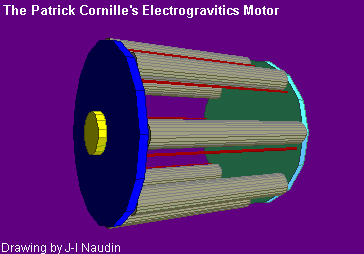

ELECTROGRAVITICS
EXPERIMENT WITH A MOTOR
By Patrick Cornille
created on 01-13-98 - JLN Labs - last update on 03-03-99
The spontaneous movement predicted by the above theory is rectilinear. However, we used several capacitors mounted on a wheel-like supports in order to transform the rectilinear motion into a circular motion. Since the capacitors are connected in parallel, the force is greatly increased and can be used to produce mechanical work.

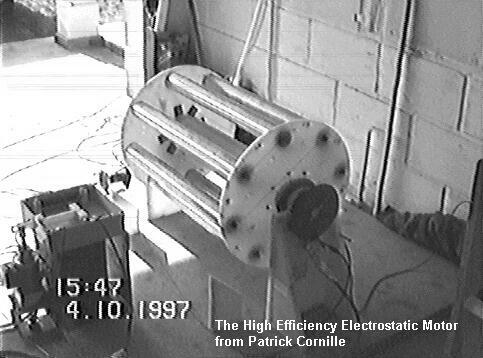
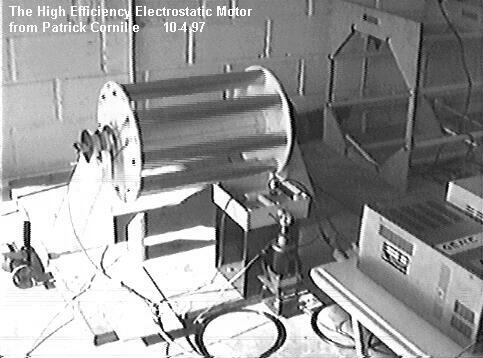
The capacitors are made with aluminium cylinders and thin metallic wires located parallel to the cylinders and connected to them in order to produce the necessary leakage current through the ionization in the air surrounding the capacitors.
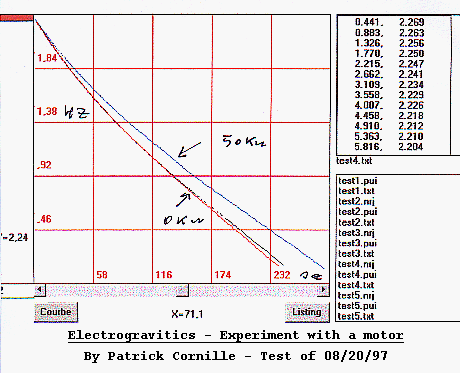
The rotor is first accelerated with an electrical motor which is then turned off to let the speed of rotation of the motor freely decrease. The rotation frequency of the motor versus time with and without voltage is automatically measured. We can successfully report that the friction coefficient of the rotor is decreased when the high voltage is applied due to the existence of the spontaneous force.
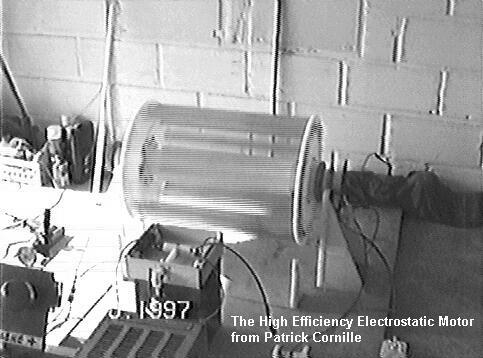
The High Efficiency Electrostatic Motor in rotation
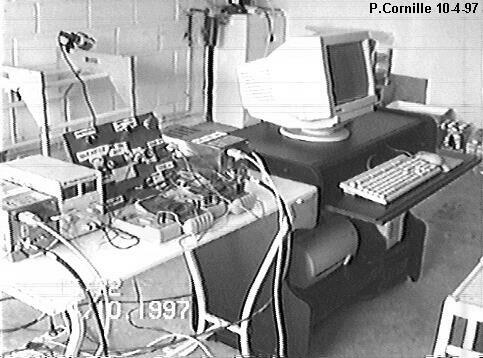
The High Voltage Station and the PC Computer used for data analysis
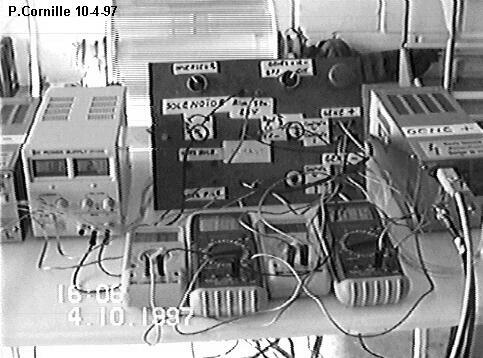
The High Voltage Generators
This motor has already been patented : EP720788B1: HIGH EFFICIENCY ELECTROSTATIC MOTOR
I would like to thank Mr. Rigourd , professor of technology at the Technology Institute of the University of Ville d'Avray ( University of Paris X ) and the students : Allain Fabrice, Bui Thong, David Emmanuel, Doussat Sylvain, Duarte Eric, Lanza Sophie, Martins Irondino of the mechanic department for the realisation of the motor.
![]() Mail
to Mr Patrick Cornille
Mail
to Mr Patrick Cornille
Back to the Electrostatic Pendulum home page